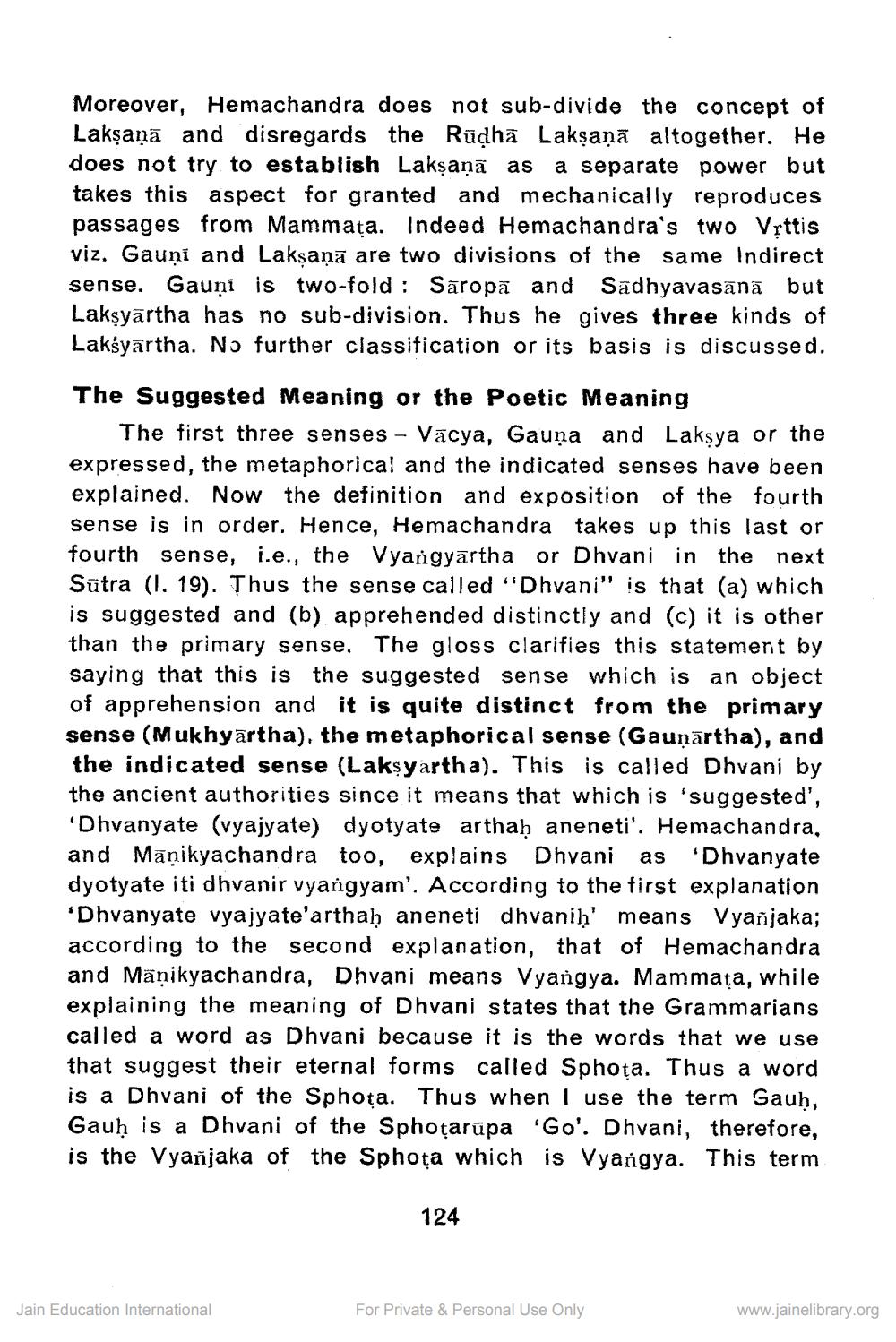________________
Moreover, Hemachandra does not sub-divide the concept of Lakşaņā and disregards the Rūdha Lakşaņā altogether. He does not try to establish Laksanā as a separate power but takes this aspect for granted and mechanically reproduces passages from Mammața. Indeed Hemachandra's two Vittis viz. Gauņi and Laksaņā are two divisions of the same Indirect sense. Gauņi is two-fold : Sāropā and Sadhyavasānā but Laksyārtha has no sub-division. Thus he gives three kinds of Lakśyārtha. No further classification or its basis is discussed.
The Suggested Meaning or the Poetic Meaning
The first three senses - Vācya, Gauna and Lakşya or the expressed, the metaphorical and the indicated senses have been explained. Now the definition and exposition of the fourth sense is in order. Hence, Hemachandra takes up this last or fourth sense, i.e., the Vyangyartha or Dhvani in the next Sūtra (I. 19). Thus the sense called "Dhvani" is that (a) which is suggested and (b) apprehended distinctly and (c) it is other than the primary sense. The gloss clarifies this statement by saying that this is the suggested sense which is an object of apprehension and it is quite distinct from the primary sense (Mukhyārtha), the metaphorical sense (Gauņārtha), and the indicated sense (Laksyartha). This is called Dhvar
cient authorities since it means that which is suggested', 'Dhvanyate (vyajyate) dyotyate arthah aneneti'. Hemachandra, and Māņikyachandra too, explains Dhvani as 'Dhvanyate dyotyate iti dhvanir vyangyam'. According to the first explanation 'Dhvanyate vyajyate'arthaḥ aneneti dhvanih' means Vyanjaka; according to the second explanation, that of Hemachandra and Mäņikyachandra, Dhvani means Vyangya. Mammața, while explaining the meaning of Dhvani states that the Grammarians called a word as Dhvani because it is the words that we use that suggest their eternal forms called Sphoța. Thus a word is a Dhvani of the Sphota. Thus when I use the term Gauḥ, Gauh is a Dhvani of the Sphoțarūpa 'Go'. Dhvani, therefore, is the Vyañjaka of the Sphota which is Vyangya. This term
124
Jain Education International
For Private & Personal Use Only
www.jainelibrary.org




